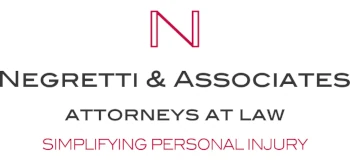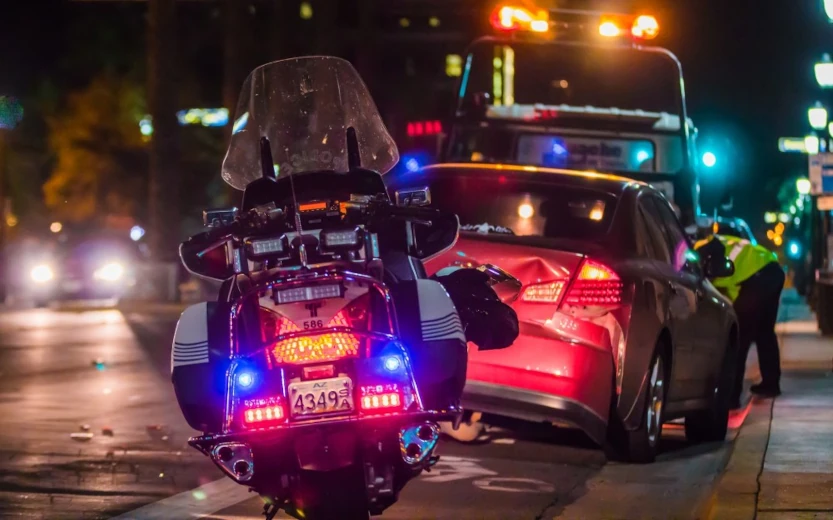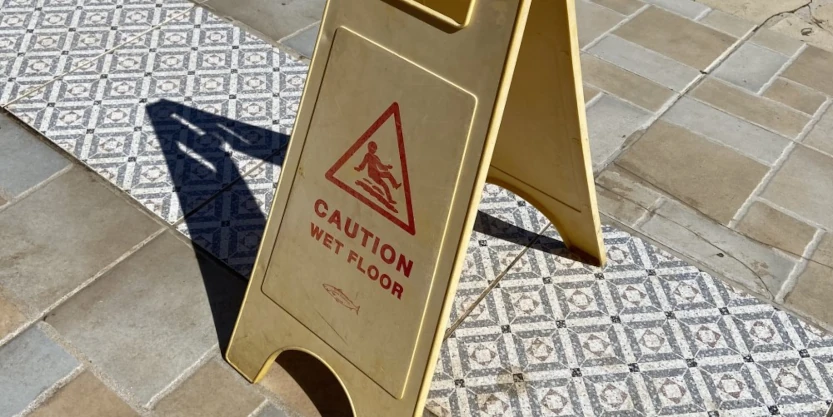In this week’s edition of Negretti & Associates’ Legal Beagle Podcast Jonathan interviews personal injury lawyer Brian LaBovick, author of Not a Good Neighbor: A Lawyer’s Guide to Beating Big Insurance Companies. In his book, LaBovick shows you how to navigate the paperwork and pitfalls of an automobile accident case. He shares stories from nearly three decades in practice to help you maximize benefits in this often-complicated process. You also may pick up a tip or two of how to spearfish in the coastal waters of south Florida!
Jonathan Negretti: We’re here to talk about a hot new summer read that everyone should put on their calendars to read this summer at the beach. It’s called Not a Good Neighbor: A Lawyer’s Guide to Beating Big Insurance Companies.
Brian, what prompted you to write this book?
Brian LaBovick: A couple of things prompted me to write the book. Number one, after 30 years of injury practice, you kind of develop a reputation, and you develop kind of a motif in your injury world work. Our motif has been, for the most part, to do cases of relative significance.
What ends up happening when we start down the path of a case, and we find out that a person’s file really doesn’t fit our profile. We need to try to help them out, and we want to give them an opportunity to be helped out, but their case really doesn’t demand either a lawyer to be involved or litigation to be involved. We wanted a solution for those people.
So, this book is part of that solution for a lot of people, where they can go ahead and get their own cases settled — not pay an attorney’s fee, and get the maximum out of the value out of their particular cases. And so, it’s just trying to help people. That was the main motivation.
Jonathan Negretti: We may disagree on one point. You say that not everyone needs a lawyer. And I actually agree with you on that. But the reason for that may be different between the two of us. Why do you think that not everyone needs a lawyer?
Brian LaBovick: I think that, personally, there are many situations where the lawyer doesn’t add value to the claim for the prospective client. My goal is always to add more value than we take in service in dollars. So, I want to make sure that I’m always adding more value than the person can do without the service of the lawyer.
By keeping that formula, I think that we keep our reputation intact. That’s why what I mean by situations where we don’t add enough value to the case. This book can get people where they need to go without having a lawyer involved.
Jonathan Negretti: Well, I guess we agree!
Brian LaBovick: Oh, good!
Jonathan Negretti: Because that’s exactly what I say to people. If we can’t add more value than what we would take out of the case, then there’s no reason to hire us. We’re exactly aligned in that way.
There are some attorneys that I’ve heard that don’t want cases because all they’re looking for is the big fish. All they’re looking for is the big multi-million-dollar claims, and so they won’t take anything else. It leaves a big group of the population without help — without resources when they really could benefit from a lawyer.
So, I like the way you just explained that because I agree with that idea of “If I can’t provide value, then you’re better off doing this alone.” I totally agree with that.
Brian LaBovick: I think that you and I are on the exact same page. There’s room in the market for that, right? There are businesses in the market who only want that seven-figure-and-above case. And, if you don’t have a seven-figure-and-above case, then you really don’t have a space in their business models.
That’s not my business model. My business model is to help a lot of people. I don’t want to say that we have a “mill practice,” because we certainly don’t. We don’t come close to that mill practice. There are some practices here that drag in 20, 30, 50 people a week. That’s not our practice model. But we definitely like to work on cases where we add value.
There are just some cases out there, unfortunately, at least in Florida, where the insurance profiles of all the parties involved don’t give an opportunity to the plaintiff to really get value out of having an attorney involved. That’s just a fact — a commercial fact — in my neighborhood.
Jonathan Negretti: So, we’re in a day and age where most attorneys — including myself — tout these big outcomes and these awards or verdicts, and we talk about how great we are, and we celebrate all the victories.
You take an interesting turn or twist in this book. You talk about a lot of losses. Why did you do that? You’re very humble in the way you describe things. You didn’t just go through and say, “Let me tell you about all of the seven-figure victories.” You went through and said, “Let me tell you when I got my butt handed to me.” Why did you do that?
Brian LaBovick: I think it’s important that people know that you don’t learn as much from your victories as you do from your defeats. If you’re a conscientious human being, and you care about what you do — if you care at all about learning the lessons of getting good, getting competent at being a great trial lawyer — you’re going to get losses. If you’re not trying cases, you’re not losing cases. Right? You’re going to end up losing cases you should have won, and you’re going to wind up winning cases you probably should have lost.
Six human beings on a jury, at least in Florida, get to make the decision about a case. There are six organic creatures there. I can’t control them. I’m not a Svengali. People think, “Oh, the lawyers are so good at manipulating and controlling.” But it’s just not true.
There are two very smart lawyers — or four, sometimes — on each side of a case. We put that in front of a jury, and those six people get together and create an organic outcome. Sometimes that outcome goes my client’s way and, unfortunately, sometimes it doesn’t. So, I just wanted people to get a really good sense of what the lessons are out there.
So, I thank you. I appreciate the “humble” comment because I want to be a humble person. I wouldn’t say that my friends call me a humble person.
Jonathan Negretti: I read that — and I highlighted it — about the client who ran away to the circus. Is this a real story, Brian?
Brian LaBovick: It’s a real story. I mean, that was one of the heartbreak stories. There are these moments that you go through as a young trial lawyer. You take on these people’s lives.
I would take on these people’s lives. And I would take them on in a way that I truly lived them. [Their problems] became my problem, my life.
When that person came to me days before trial and said, “You’ve got to settle the case. I’m running away. I’m going to join the circus,” that left one of those scars that taught me you have to separate yourself from your client.
Just like that. That was such a deeply cut scar. I was so invested in this person’s life. For her to just be like, “I’m going to join the circus” — wow, that was crazy.
Jonathan Negretti: I’m not laughing at you, Brian. But when I read it, I did laugh. I cannot believe that was a real story.
Brian LaBovick: It’s a true story. I’ve got so many. I’m sure you do, too. After 30 years of practicing law, I’ve got so many client stories, and then so many employee stories.
Jonathan Negretti: So, tell me why is it that you think insurance companies make it so difficult for people — and are really reluctant to pay what we call fair value on claims?
Brian LaBovick: I think for insurance companies it’s a matter of data and money. They do a very good job understanding the data — the actual risk, knowing what risk they can sustain, looking forward 50 years into this time horizon of an investment perspective.
They think to themselves, “If we do this, we’re going to have this much money. If we invest it this way, we’ll have this much money. And this is how much we’ll have to give to people.”
Their risk analysis is just way better than ours. Their data analysis is better than ours. We deal in this human endeavor, and they deal in data. And this is just a matter of data for them. It’s not a human issue.
Jonathan Negretti: I think human kindness is a real thing, and I think humanity is special. I love that you said earlier that what we deal with humans, and what insurance companies do — they deal with data. You can’t lose sight, I think — maybe it’s just my naïve personality — but I think the human spirit always prevails. I just believe that. I really do.
Brian LaBovick: I do, too.
Jonathan Negretti: The data is helpful. It’s good, it’s strong. But you can’t take away that human dynamic which I think you talk about a lot in your book.
Tell me, where people can find your book, Not a Good Neighbor? Where can they get a copy?
Brian LaBovick: Oh, you can find it on Amazon, Barnes and Noble, Target, and some local book sellers — at least here in Florida. It’s super easy to find. Just type into your browser, LaBovick Not a Good Neighbor. It’s gonna pop up. You can get it anywhere, and the audiobook should be coming out in the next three weeks.
Jonathan Negretti: Are you doing the audio?
Brian LaBovick: No, no, no! You’re way better off having a professional reader than me. I asked. Because you’ve got to hire somebody to do this, And I listen to a lot of audiobooks!










